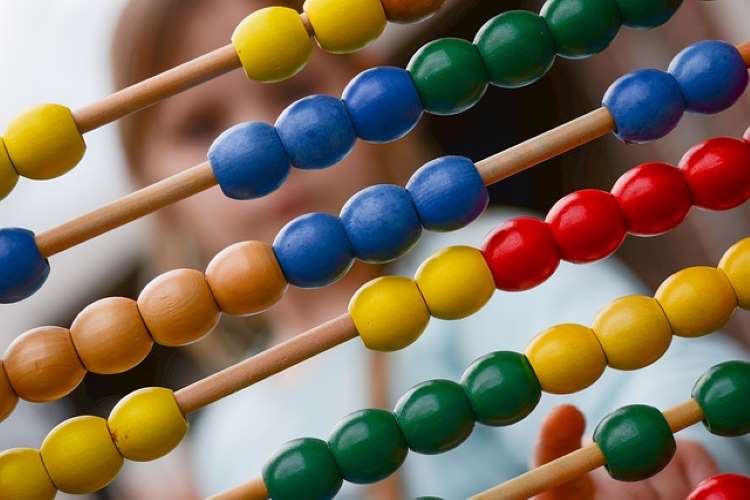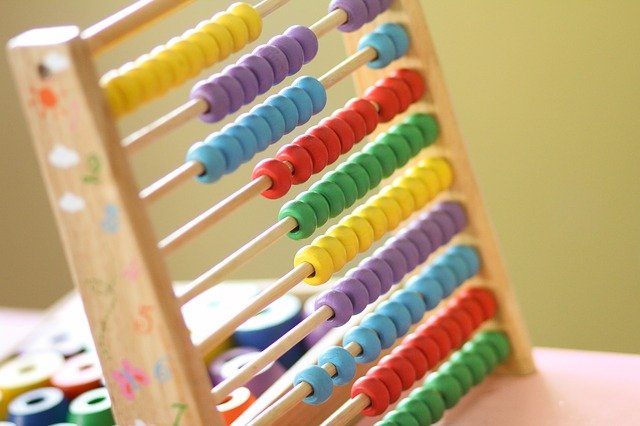Is Abacus Good for Kids? How to Make Your Kid Learn Abacus?


Children start their maths journey by counting numbers on their fingers and as it exceeds levels it becomes challenging because digits get bigger. Children who have difficulty in learning the methods which are taught in school for maths can benefit from learning abacus which is a practical and lively method but they should be committed and willing to learn to get the best outcome.
This article talks about the advantages of this method, what is the correct age to learn and what outcomes will be there if you are committed and show interest.
Also Read: Math Puzzles for Kindergarten: Make Math Fun and Joyful for Kids
Learning courses for your kids! Get free trial here
Abacus for Kids
Learning the method has always been useful at an early age but, people should also understand that students have an age to learn the method, that is between 4-13 years of age. Abacus is a method that is based on mental maths and is a structured program that has 12 levels and 10 degrees respectively and every level takes 4-5 months to complete. Researchers have also observed improvement in math after the completion of level 10. This method takes at least 3 years to complete and receive all the benefits.
The method helps in the easy grasp of multi-digit numeric relationships, and it also presents the relationships of the numbers and instead of regular arithmetic problems. The method also helps younger children to understand concepts of maths like number values, decimal system, digit positions, etc and understanding numbers will help them to get interested in the subject.


How to make your Kids Learn Abacus?
There are many methods but this one is a simple and effective one of how to make your kids learn abacus
The Match My Move Method
# Before starting make a start position on the abacus and put all the beads on the same row and all the beads are on the same side
# Always start from the top and move the beads to the other side of the frame and make sure that your child is looking for the move as they are moving the beads.
# After that ask your kid to follow the steps that you did and help them while they are carrying out the same steps so that they learn it and move the exact number of beads that you moved in the direction and also the same beads in the row
Make it Interesting
# To make it more interesting and does not get bored and stays on the ground, make it more attentive by changing the number of beads you move and at each step by also changing the direction
# Always be sure to make the moves slowly so that your child follows it or else he/she will lose interest and if he/she is quite young, you can also slowly count out the number of beads such as one-digit numbers like one, two, three, four and so on so that it becomes easier.
# Move different beads and make some patterns while moving such as one bead, two beads, three beads, and so on and with each row that you work on.
Is Abacus Good for Your Kids?
Many parents may have doubts about, in this age where students use calculators and laptops for calculations, what should one go for abacus? Well here are your answers.
# Maths skills are enhanced and they develop an interest in the subject
# Enhances mental abilities like concentration, memory, spatial ability, visualization, attention span, analytical ability, observation, self-confidence, self-discipline and focus
# Enhances the listening, problem-solving and multi-tasking ability
# Helps in improving motor reflexes and increases coordination between hands, eyes and ears
# Improves and enhances the development of different parts of the brain.
Advantages
# Abacus is an effective tool to learn mathematical problems, calculations and exercises. It is used in school for many years and rather proved effective
# It strengthens children foundation and helps in the growth which also helps in brain computations
Disadvantages
# It is a practical method and one should be aware of the method before teaching it to the children and one should always learn it before teaching
# It is for the primary section and not for the students who want to learn advanced mathematics
# The common and main disadvantage of this method is the inability to solve complex problems.
Also Read: How to Teach Mental Math for Kindergarten? Math Concepts for Kindergarten.
How to Make Abacus for Kids?
The following process helps to make Abacus at home
Aim: To make Abacus at home and make it interesting for your kids
Material Required
# 10 pipe cleaners.
# Beads in 10 different colours.
# Hot glue gun
# 2 dowel rods
Method
# Do it with your child to make it more interesting and ask him/her to separate the beads as per the colour
# Hold the dowel rods in the vertical position and lay the pipe cleaners on them in a horizontal position
# Then ask your child to twist the pipe cleaners at the end of one of the dowel rods and rule it with the pipe cleaners
# Now, add the beads, as per the arrangement done and glue the ends of the pipe cleaners and rods in place.
Learning courses for your kids! Get free trial here
Conclusion
When theory is mixed with practical than learning becomes more knowledgeable and skilful and in today’s world one needs to have practical learning and one should be interested in the subject and abacus is one of the methods to learn mathematics which students think is boring and not at all interesting. Kids always need to find it interesting to make them interested in the subject and nothing is better than practical methods.
I hope this article helps every one to get their doubts cleared and if you have any suggestions, doubts and queries the comment section is always open and The Real School Of Montessori provides all the courses relating to the method and also helps students to learn in a healthy environment.
Also Read: How to Prepare Questionnaires for Kindergarten Maths? Here’s a Structured Way at Your Rescue
Recent Posts
What are the Advantages of Online Teaching at The Real School?
In the article -"What are the Advantages of Online Teaching at The Real School?" we…
What is the Full Form of School?: Unveiling the Acronym
The term "school" carries profound significance in the realm of education, representing more than just…
What is Math Full Form?: Cracking the Code
Mathematics, often referred to as "Math," is a subject that elicits various reactions from students…
What is Full Form of Homework?: Decoding Academics
Homework, an integral part of the academic journey, often raises questions about its purpose and…
What is Full Form of Teacher?: Demystifying Education
In the intricate tapestry of education, teachers stand as the pillars shaping the intellectual and…
What is Real Education?: Discovering Its Essence and Impact
The concept of real education is evolving, transcending traditional views that equate it solely with…


